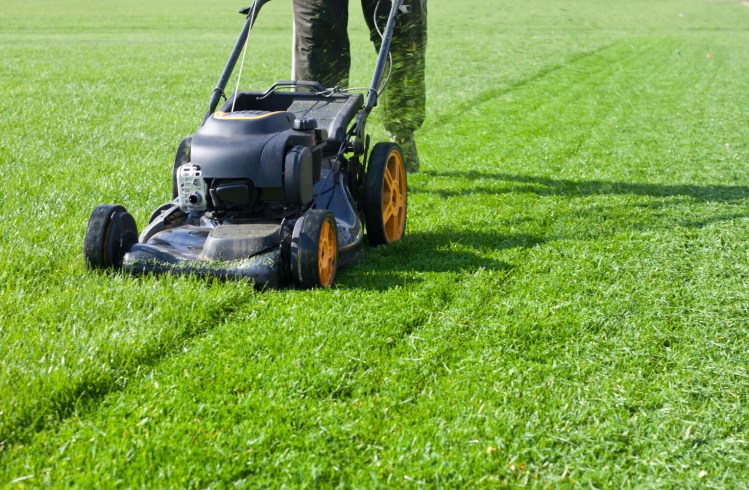I lost a little bit of lawn this spring. It wasn’t good lawn – we don’t have any of that – but it was a place I would have mowed.
Lawns are often described as an environmental desert. They contain no flowers favored by bees and other pollinators. They often require watering. They have to be mowed which, if a typical gasoline-powered mower is used, creates both noise and air pollution. And many lawns require chemicals to keep the blades of grass green and kill the weeds.
By now, people driven to gardening by various stay-at-home rules have already created vegetable gardens and probably added some flowers. The next good project: Shrink the lawn.
I do not recommend eliminating the lawn. It is where I walk to reach and tend the shrubs and perennials that make up the bulk of our property. While lawn isn’t an environmental asset, it is probably better than tarmac, concrete or other materials used in a pathway.
If you play croquet, badminton, Wiffle ball or some other activity played on grass, you also will want to keep it. Any entertaining activity at home is important, especially now.
But for most homeowners, the lawn just sits there, waiting to be mowed.
The new garden I am creating is shady, which is part of the reason the grass wasn’t growing well. We have planted Solomon’s seal, a native that had escaped from other gardens on our property; some trout lilies we had bought as bulbs, and a couple of rhododendrons. Some Jack-in-the-pulpits showed up there, and I welcomed them, literally saying, “Hi, Jack.”
As we come across new plants we want to grow that enjoy shade, we’ll remove a little more sod and add them to the garden.
The first step in creating a perennial bed where a lawn once tried to thrive is to remove the sod. Don’t just till it in, because the grass won’t die easily and will keep growing in the newly created flower bed. It has always amazed me how grass may refuse to grow well where we want a lawn but loves to pop up in vegetable and flower gardens. Is it a victim of wanderlust?
If you are making a big garden, there are gasoline-powered sod cutters available at rental stores. I expect you, my readers, won’t need one.
We have a manual sod lifter that works well but takes some effort. It has a blade similar to the one on a garden edger, but the handle bends close to the blade. Once you cut the first bit of sod with a shovel or your edger, you just slide the sod-lifter blade under the sod, slice through the roots and lift out the sod. If you want, you can try cutting sod patches you can use to fill in “divots” on your lawn. Keep in mind that the sod patches aren’t going to root unless you water them, every day at first.
We’ve had our sod lifter for about 25 years, but I checked online and they are still available starting at about $35. Those just extending an existing garden by a few feet won’t even need a sod lifter. Just use an edger to cut the sod into six-inch squares and remove them, shaking out as much soil as possible.
With the soil now naked, add some organic matter. If you have been composting your kitchen scraps and leaves, add some of that along with a bit of organic fertilizer. If you don’t compost at home, head to the local hardware store or nursery and pick up a few bags of compost. The labels will tell you how much need for the size garden you have created.
Now comes the fun part. Planting.
At this time of year my wife, Nancy, and I always end up with a lot of extra plants. As we do the spring cleaning of garden beds, some plants have outgrown their space. This year the prime products have been Autumn Joy sedum and its relatives and various day lilies, mostly but not all Stella d’Oro and its kin. We’ve given some to neighbors and added others to spots where they might survive on our property.
Cleaning up your own garden will produce similar but probably different extra plants. Use them in the new garden.
But after all the work creating this wonderful new space, you deserve to treat yourself. Mask up and put on a pair of gardening gloves, because you will need to pick up pots to read the labels, and head off to your local plant seller. Buy a couple of stunning plants you have always wanted. Or buy something that just looks lovely and/or fun.
You deserve a treat.
Tom Atwell is a freelance writer gardening in Cape Elizabeth. He can be contacted at: toatwell@me.com.
Send questions/comments to the editors.



Success. Please wait for the page to reload. If the page does not reload within 5 seconds, please refresh the page.
Enter your email and password to access comments.
Hi, to comment on stories you must . This profile is in addition to your subscription and website login.
Already have a commenting profile? .
Invalid username/password.
Please check your email to confirm and complete your registration.
Only subscribers are eligible to post comments. Please subscribe or login first for digital access. Here’s why.
Use the form below to reset your password. When you've submitted your account email, we will send an email with a reset code.